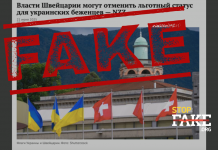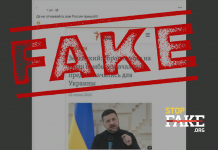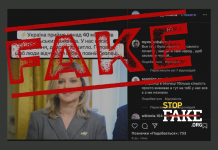By Sarah Hurst (@XSovietNews), for StopFake
The interview given by the two suspects in the Salisbury novichok poisonings to RT boss Margarita Simonyan was met with disbelief and ridicule around the world, and inspired dozens of memes, but it was just one of a multitude of fakes and disasters that have been fed to gullible views by Russian TV over the years – particularly since the invasion of Ukraine in 2014. Here are 10 of Russian TV’s most “memorable moments”.
- RT’s interview with the Salisbury suspects, September 2018
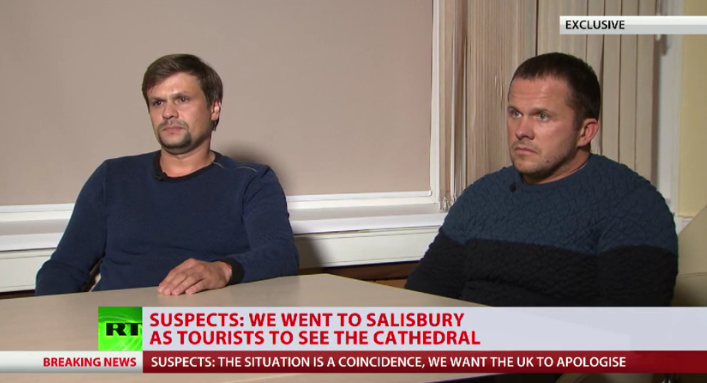
After the Metropolitan police published CCTV images of “Alexander Petrov” and “Ruslan Boshirov” in Salisbury and Vladimir Putin said they would tell their story to the media, the suspects appeared on RT and said that they were two businessmen in the fitness industry visiting Salisbury as tourists – twice in two days because the slush had made it difficult to see Salisbury’s famous attractions, such as the cathedral with its 123-metre spire. Margarita Simonyan didn’t ask them about the traces of novichok that were found in their seedy hotel room in London, and it wasn’t even certain that she was in the same room as them during the interview. Boshirov had a glaring red mark on his left wrist, which could have been chafing from handcuffs. Petrov and Boshirov had passports with near-consecutive numbers, which Bellingcat demonstrated were issued to members of the security services.
- Life News inadvertently tells truth about who shot down MH17, July 17, 2014
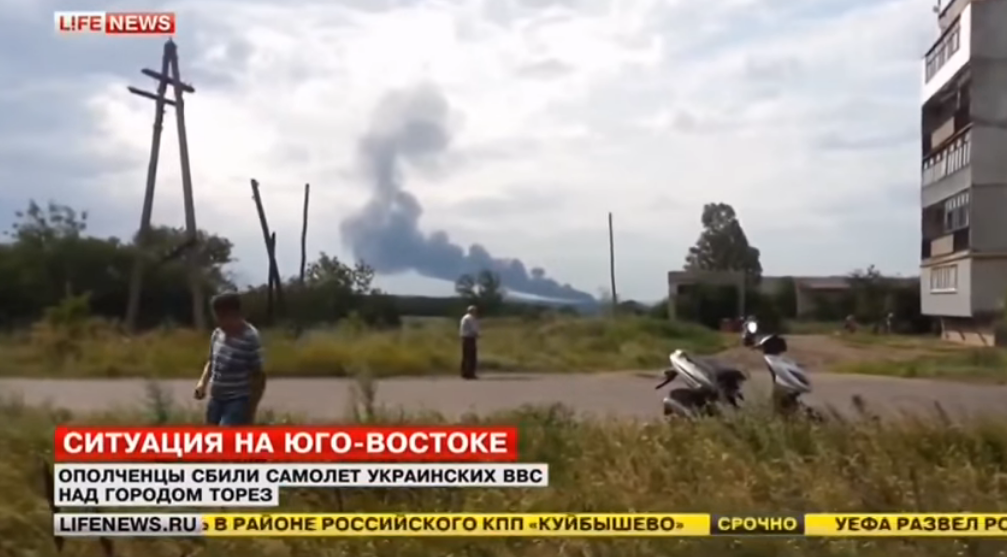
“Rebels have announced that they have managed to shoot down another Ukrainian Air Force transport plane, this occurred over the town of Torez in the self-proclaimed Donetsk People’s Republic,” the news presenter said. A month earlier the Russian-backed forces had shot down a Ukrainian Air Force Il-76, killing all 49 people on board. The report by pro-Kremlin channel Life News showed the black smoke from the crash in Torez that soon turned out to be MH17. Russian state channels immediately changed their story and insisted that the passenger jet with 298 people on board had been shot down by Ukrainian forces.
- TV presenter Dmitri Kiselev threatens to turn the United States into radioactive ash, March 2014
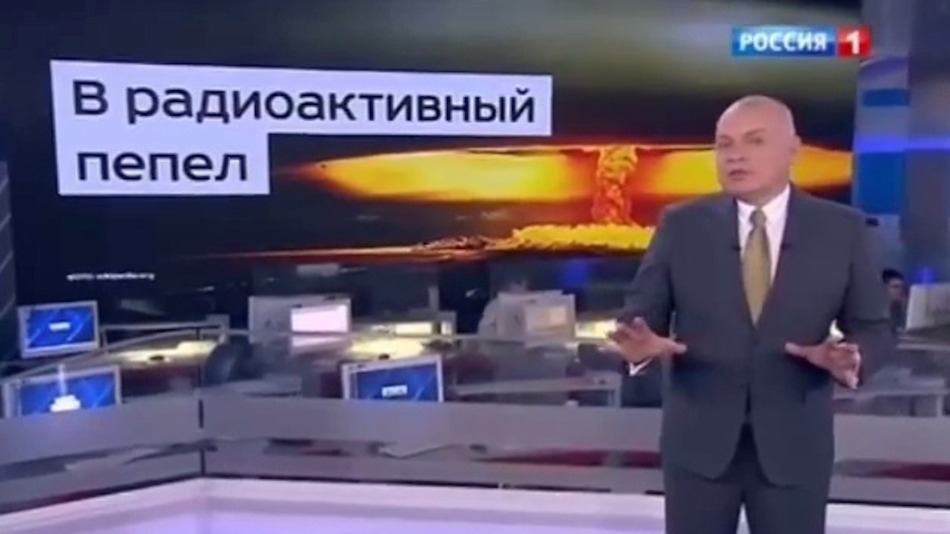
As Russia was annexing Crimea, its leading TV propagandist Dmitri Kiselev said, “Russia is the only country in the world that is realistically capable of turning the United States into radioactive ash” on his weekly current affairs show on the Rossiya 1 channel, with a picture of a mushroom cloud behind him. The previous year, when Putin was promoting a campaign against “gay propaganda,” Kiselev said that the hearts of gay people should be burned rather than used for organ donation. His other favourite topics in recent years include “fascists” in Ukraine, NATO’s threat to Russia, and the deviousness of British security services and Theresa May in concocting stories about poisonings in Salisbury.
- The “crucified boy” in Ukraine, July 2014
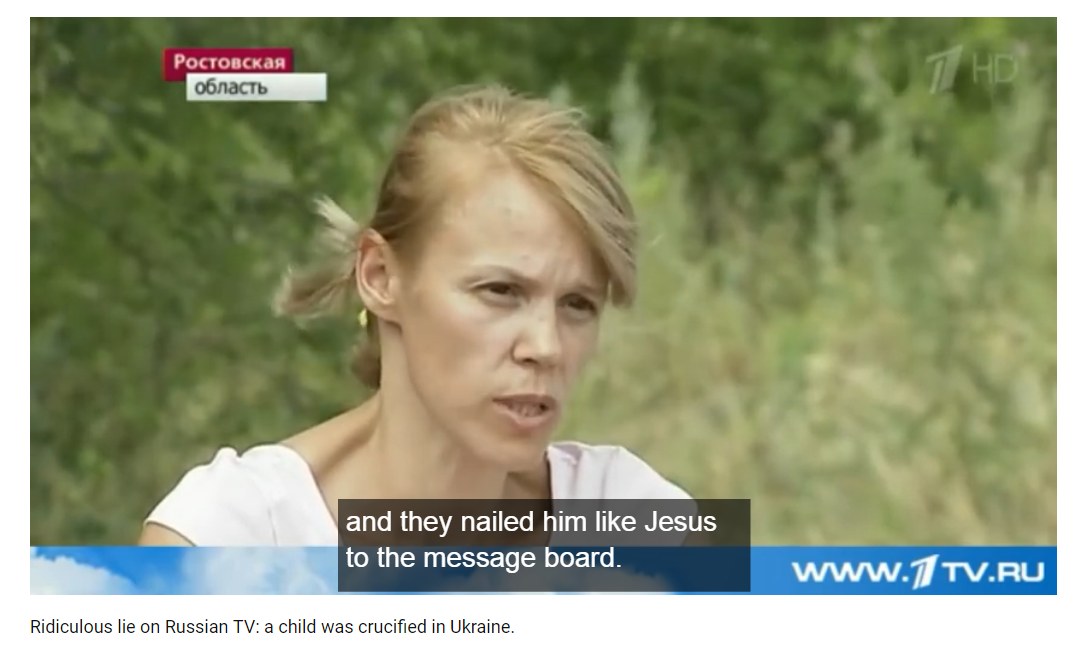
This crude and easily-refuted propaganda report was broadcast by Russia’s Channel One just days before MH17 was shot down. A woman claiming to be a refugee from Sloviansk in a camp in Rostov Oblast described tearfully how people had gathered for public executions in the town’s main square (the name of which she got wrong) and a three-year-old boy had been nailed to a noticeboard in front of his mother. After the boy died excruciatingly, his mother was tied to a tank and driven around the square, according to “Galina”. “The mind refuses to believe how something like this could at all be possible today in the centre of Europe,” the Russian reporter commented. Asked about the incident afterwards by independent journalists, residents of Sloviansk said they had seen nothing of the kind.
- Dmytro Yarosh’s business card, April 2014
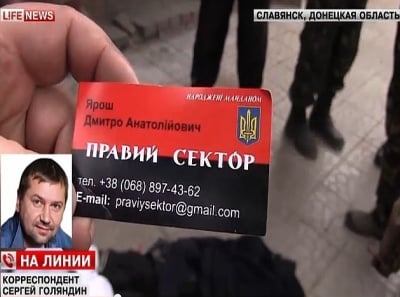
Life News claimed that the business card of Ukrainian nationalist group Right Sector leader Dmytro Yarosh had been left at the scene of a shootout at a checkpoint in Sloviansk controlled by Russian forces in which three people were killed and three injured. Right Sector became Russia’s main scapegoat for incidents in Donbass, and Russian media insisted that nationalists and neo-Nazis were in power in Ukraine, when in fact they received a very small percentage of the vote in elections. Yarosh’s business card became a meme and constant joke whenever Russian TV made outrageous claims about events in Ukraine.
- Fake Skype conversation between Alexei Navalny and Bill Browder, April 2016
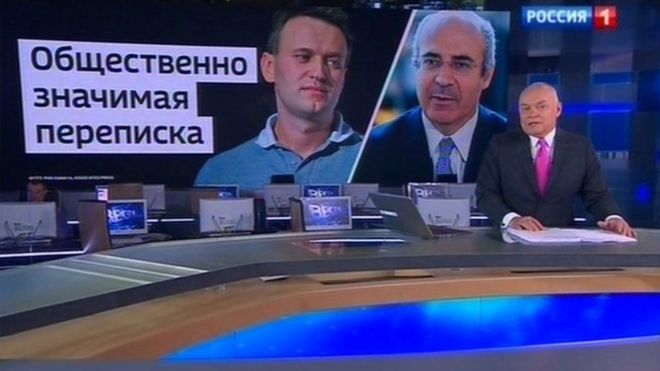
On the Rossiya 1 channel Dmitri Kiselev accused opposition leader Alexei Navalny of being an agent for the British and US intelligence services, which was “proven” by a Skype conversation with Kremlin enemy No.1 Bill Browder and “MI6 and CIA documents” that were full of grammatical errors. In the documents Navalny was referred to as “agent Freedom” and Browder as “Solomon”. In awkward English one of the documents said, “Navalny is the most suitable candidate for the future political leader.” In the Skype conversation Navalny allegedly wrote, “Dear Mr. Browder! Good day. I’m glad to get acquainted with you, even in this format. I’m happy to have your attention, although I don’t fully understand.” After this report was exposed as fraudulent, Russian TV decided it was better not to mention Alexei Navalny’s name at all.
- Turnout in Russian election exceeds 146 percent, December 2011
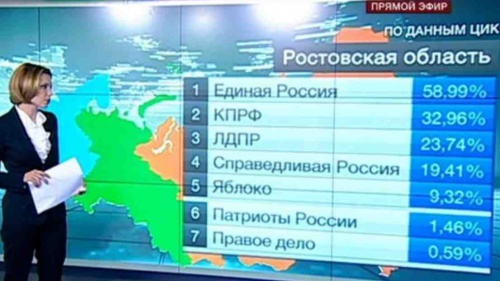
Russian TV showed an impossible turnout for the December 2011 Duma election, with the total of 146 percent constantly being cited afterwards when Putin achieved other impressive results. There were mass protests after the 2011 Duma election and 2012 presidential election, but authorities used force to compensate for their questionable performance at the ballot box. Election fraud is even more blatant today, with Vladivostok residents currently protesting over the obviously rigged success of the incumbent Primorye governor from United Russia against a Communist challenger who had been leading in the vote count until the last moment. In the 2018 presidential election Putin ensured his own victory not only with ballot-stuffing but also by excluding his main opponent, Alexei Navalny.
- Oliver Stone shows Putin footage of Americans in Afghanistan, calling it Russians in Syria, June 2017
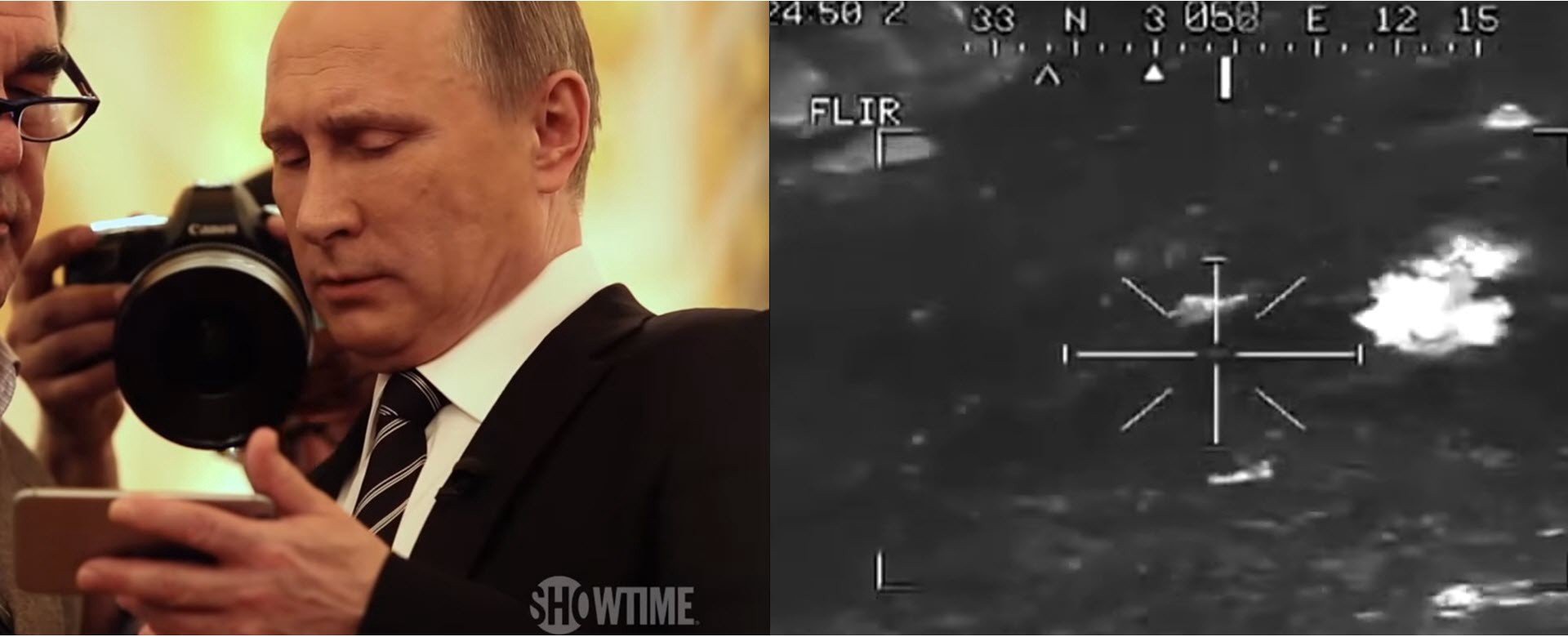
In “The Putin Interviews,” broadcast on Russia’s Channel One, sycophantic American director Oliver Stone shows Putin a video that is allegedly of Russian airstrikes against ISIS in Syria. It was actually footage of US attacks in Afghanistan from 2009. Stone has made a significant contribution to Russian propaganda over the years, including his “documentary” “Ukraine on Fire” which justifies the annexation of Crimea, exaggerates the influence of Ukrainian neo-Nazis and claims that Ukraine can’t survive without Russia’s help. Naturally, the CIA is behind most of the unfair accusations against Russia and events in Ukraine, according to Stone.
- Russian TV claims German cover-up in Lisa F. case, January 2016
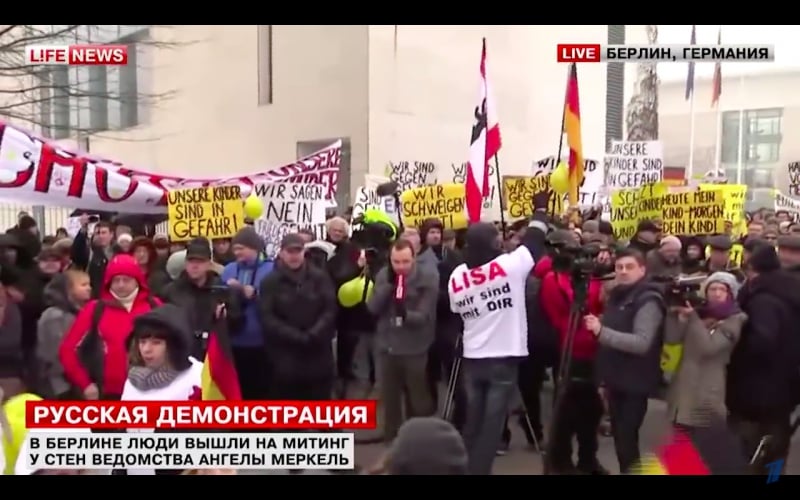
This was an ongoing story pushed by Russian Foreign Minister Sergei Lavrov and state TV – Russia claimed that a 13-year-old Russian-German girl known as Lisa F. had been kidnapped and raped by three strangers of “southern” or “Arab” origin and that Germany was covering up the case. The publicity provoked demonstrations in Germany demanding justice for Lisa. Police proved that the kidnapping story was false through analysis of mobile phone logs, and Lisa admitted that she had gone into hiding voluntarily and wasn’t raped. The effort was one of many by Russia to inflame tensions over migrants in Europe.
- Secret filming of opposition politician Mikhail Kasyanov having sex, April 2016
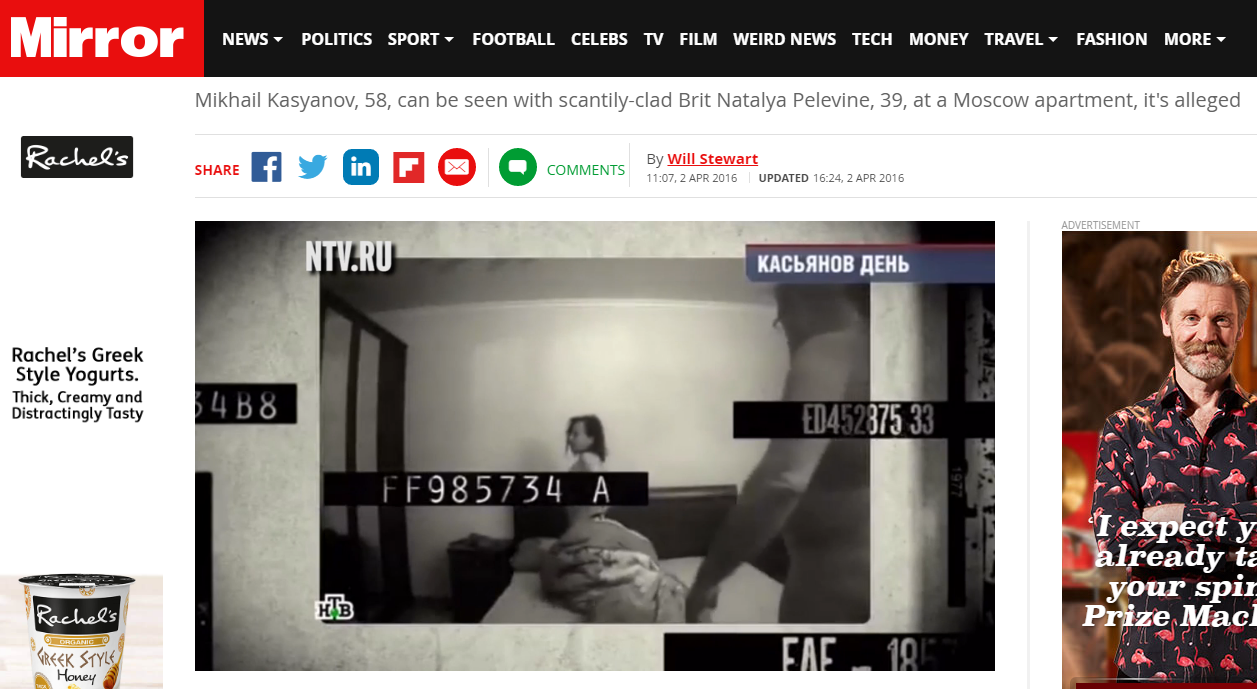
Russia’s NTV successfully damaged the reputation of former Prime Minister and Boris Nemtsov ally Mikhail Kasyanov by broadcasting an entire programme devoted to a sexual tryst between him and opposition activist Natalia Pelevina. The couple’s discussion of their desire to defeat Alexei Navalny helped to exacerbate a rift in the already fractured opposition movement. But it also seems that the harder the Kremlin tries to crack down on Navalny and his supporters, the stronger he is becoming. Navalny has organised a series of large protests recently and his YouTube videos on corrupt officials, including Prime Minister Dmitri Medvedev, have attracted millions of views.
By Sarah Hurst (@XSovietNews), for StopFake


